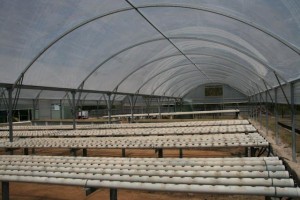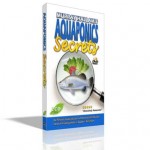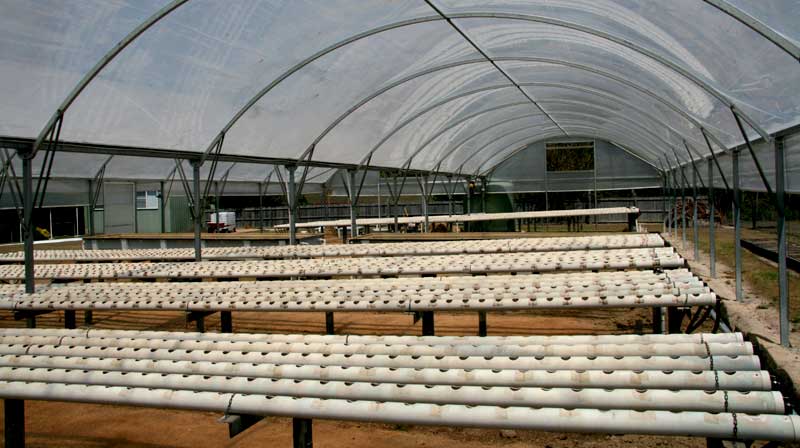Aquaponics For Profit
Converting a Hydroponics system to Commercial Aquaponics is all in a days work for Murray Hallam an aquaponics systems builder and educator. This large scale greenhouse (30m x 20m) that Murray Hallam is currently converting in South East Queensland is based on the NFT (Nutrient Film Technique) that is well known to hydroponics growers. Nutrient rich water is run through a series of channels to feed the sensitive plants.
But the problem as some growers have explained is that nutrient rich water running through a NFT system can heat up excessively and some plants like lettuce have difficulty growing with their roots submerged in hot water.
How to solve this problem has been a conundrum for many farmers.
Murray’s solution is based on the floating raft system of growing plants, also known as DWC or Deep Water Culture. Large sheets of polystyrene are pre drilled with small holes that float thousands of plant seedlings. The large water volume offers a stable temperature range to sensitive plant seedlings.

Rather than convert this system to DWC (Deep Water Culture) as its known in Aquaponics circles, Murray has opted for a hybrid blend of both techniques until the new business earns enough income to make the switch permanently to DWC.
In this edited video clip taken from his new DVD coming out next year, Murray Hallam explains the business side of making a living from growing fish and plants together.
Most beginners make the mistake of thinking the money is in the growing of the fish, but as Murray explains, your bread and butter income is growing the plants for profit. Growing fish to harvest can take upwards of one to two years depending on species.
But plants can be grown out from four to eight weeks. Murray estimates that a system such as this 5,000 hole NFT system is capable of harvesting well over 1,000 plants per week, giving a sole grower or a retired couple a good gross income of around $1500 per week for a few hours work per day.
But this calculation is based on a good location to a source market like a moderate sized city.
The owner of this system when asked said that he is mainly interested in growing niche market plants that he has already identified. When pressed as to which plant he might grow, he identified watercress as a possible plant.

A lot of conventional Hydroponics growers are taking a careful look at converting their systems to Aquaponics not only because of the inherent benefit of growing fish and vegetables together but also the fact that water – a precious commodity in Australia is at a premium and re-using water and only topping up as needed is a big plus to minimising water loss and maximising profits.
Murray Hallam’s DVD “Aquaponics Secrets” will be available from his website www.aquaponics.net.au and other aquaponics and permaculture outlets. This DVD takes you into uncharted waters and builds upon the extensive knowledge base that he has shared in his previous title “Aquaponics Made Easy” which was a big hit around Australia and overseas.
Aquaponics Secrets Preview:
[youtube]http://www.youtube.com/watch?v=W7wqpR8IiFc[/youtube]







Dear Mr. Hallam,
I plan to deploy Aquaponics on my indoor fish farm as a means to filter out ammonia from the fish water. I deploy big fish tanks of 40 m3 of water each. I need to calculate the optimum plant population as well as hydroton quantity to achieve perfect filtering of this water quantity. Is there a proven analogy (i.e., plant population and/or hydroton quantity to fish water quantity) that ensures a well-balanced nitrogen cycle? Also, water recirculation is a continuous process or a repeated process (say 3-4 times per day)? If the latter is true, what is the filtration frequency?
Your assistance would be invaluable. Thanks in advance.
With Regards,
George Angelou
Hi George, your question is too complex to be answered in one or two lines on this blog. Please ask your question at
http://www.aquaponics.net.au/forum
where you will get a detailed response.
Thanks